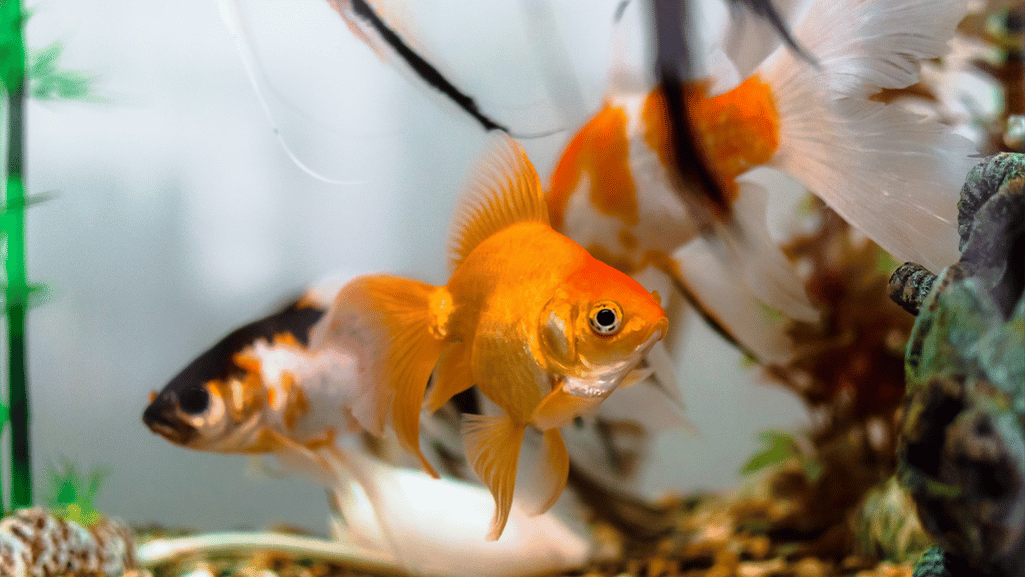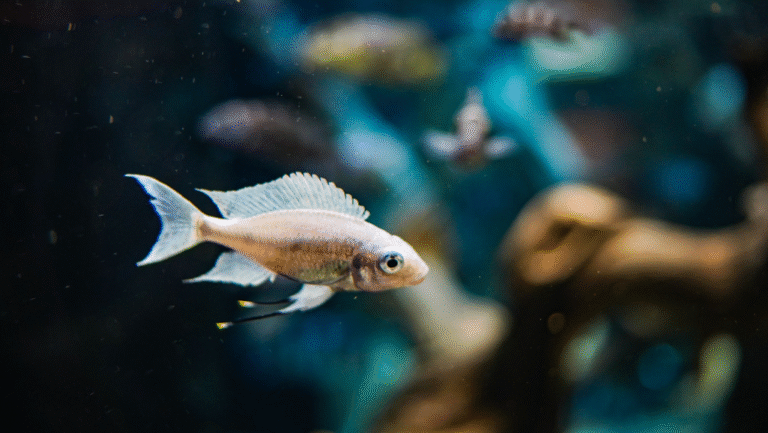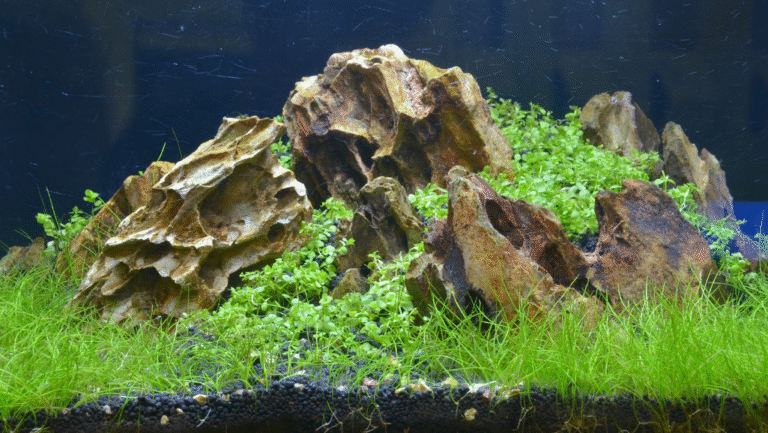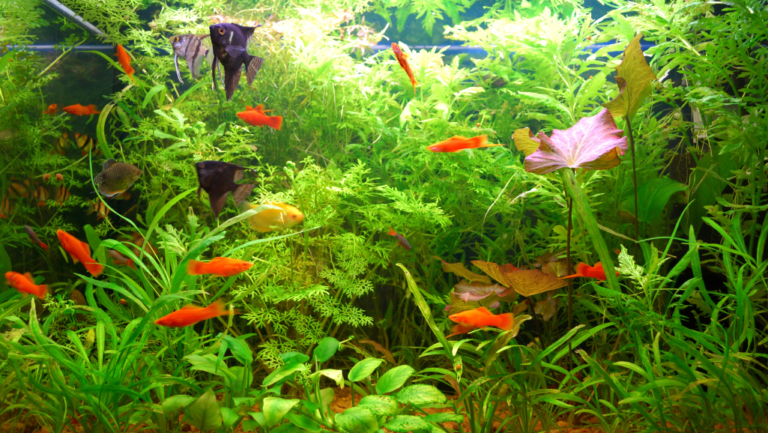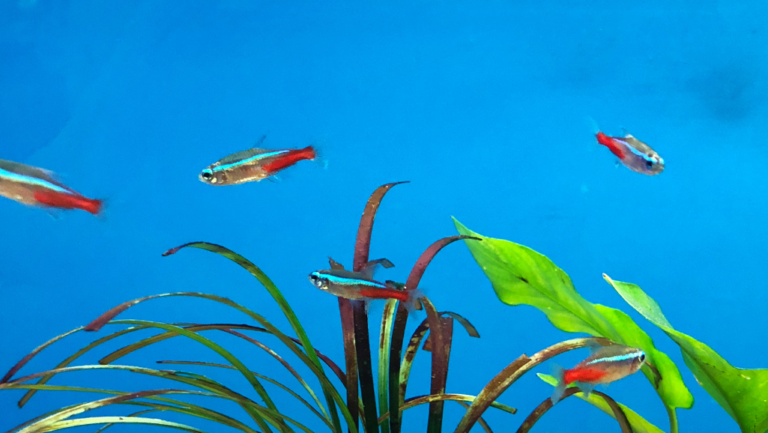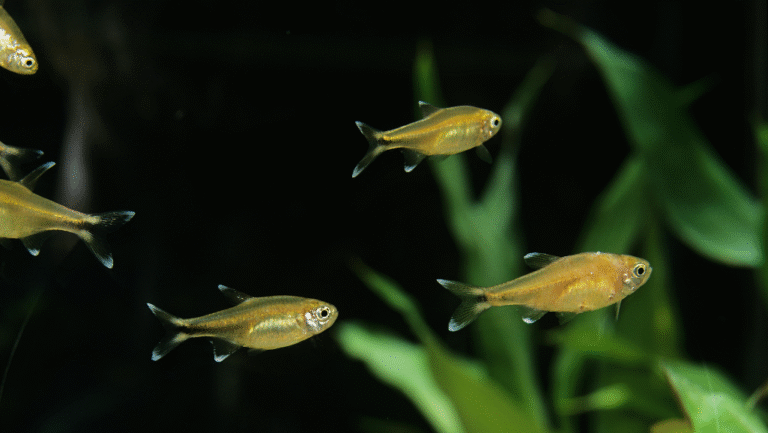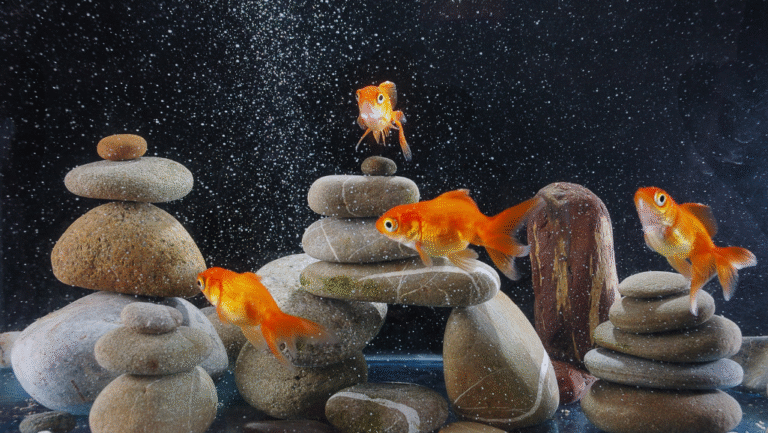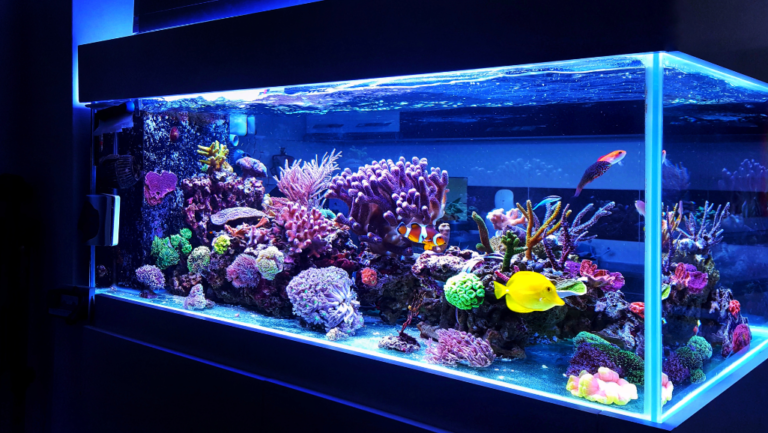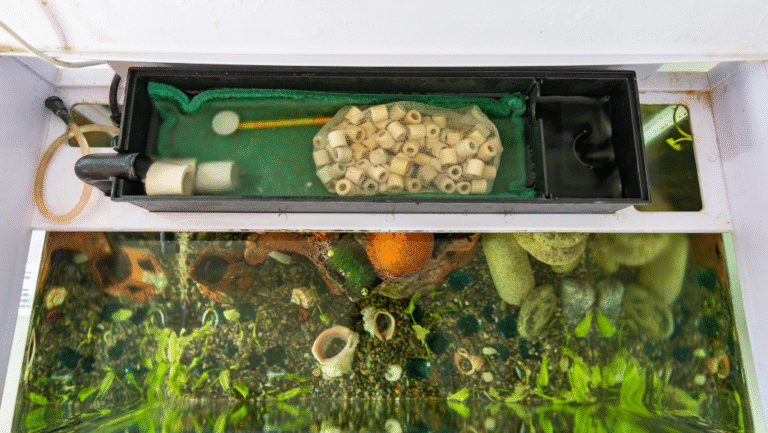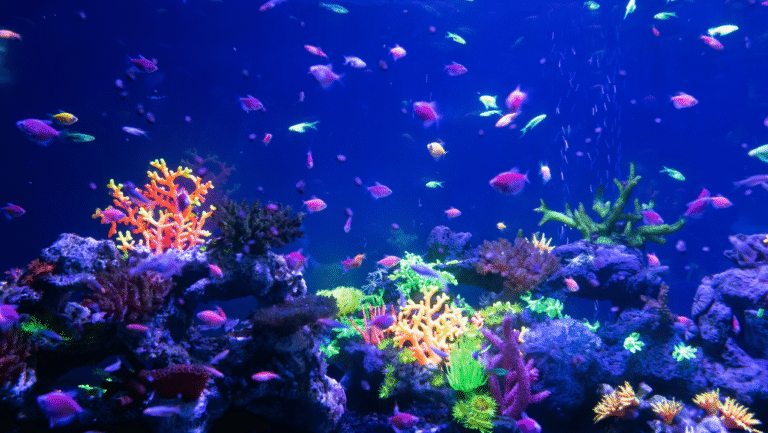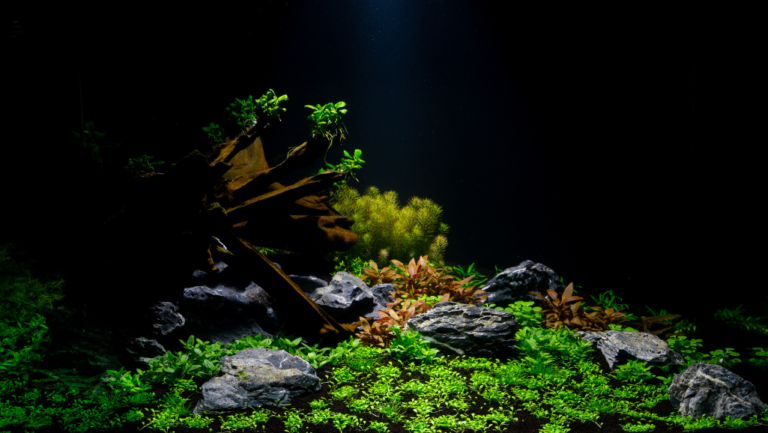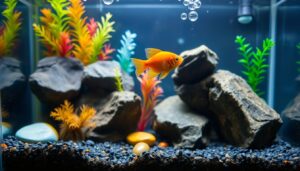Looking to start a home aquarium? Discover the best aquarium fish for beginners, their care, and maintenance in this guide. Learn how to choose the right species to create a vibrant and healthy tank.
Key Takeaways
Beginner-friendly fish options include Harlequin rasboras, tetras, and corydoras catfish, each requiring specific care and group sizes.
Setting up a successful aquarium involves understanding the nitrogen cycle, ensuring proper water conditions, and maintaining stable temperatures.
Regular water quality testing and attention to fish compatibility are essential for preventing health issues and ensuring a harmonious aquarium environment.
Best Aquarium Fish for Beginners
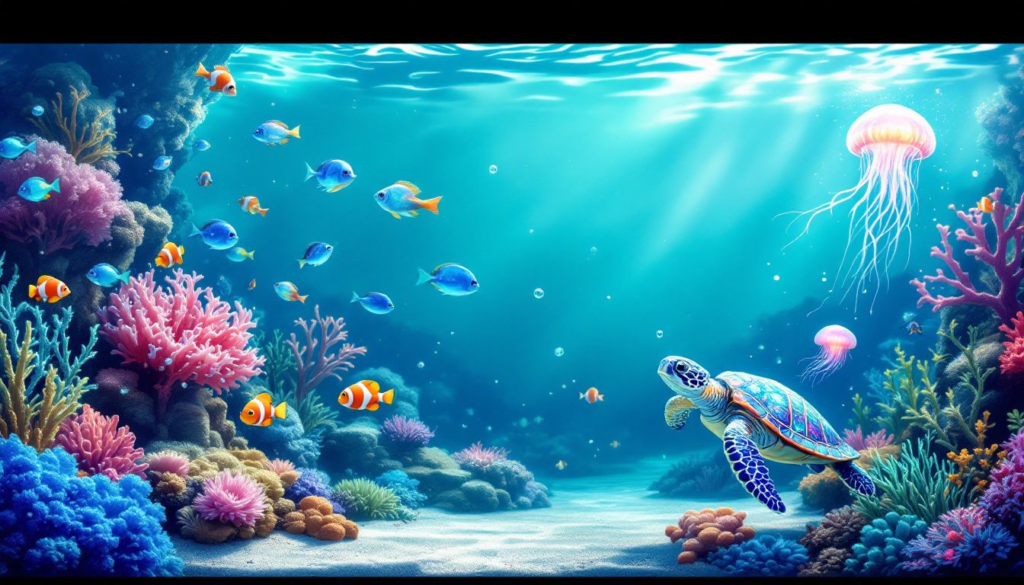
Choosing the appropriate fish can make your aquarium hobby much more enjoyable. For those new to the scene, Harlequin rasboras are an ideal selection. These petite, sociable fish flourish when they’re in schools and are perfect for compact tanks. Tetras also make a fantastic choice due to their vibrant colors, thriving best in groups of six or more with neutral water pH levels. Platies withstand various water conditions robustly and have a reputation for being enthusiastic eaters.
Add Corydoras catfish to your aquarium introduces a peaceful bottom-dwelling variety, which will require assorted sinking food items to meet their dietary needs properly. Another suitable option for novices is the Bolivian ram—a small cichlid that favors slightly alkaline environments while remaining friendly to other community aquatic species.
Barbs bring energy and vibrance into any tank setting. Maintaining them in schools helps curb their potentially aggressive nature. Kuhli loaches offer another excellent selection for newcomers—these nocturnal clean-up agents showcase intriguing behaviors when housed as part of a group where they feel secure.
It’s vital to understand each type of fish’s specific requirements regarding schooling numbers and preferred water parameters when striving for a healthy aquatic environment within your aquarium. Ensuring compatibility among inhabitants goes a long way towards diminishing stress and aggression among them.
Saltwater Fish for Beginners

Venturing into the world of saltwater aquariums can be an exciting and rewarding experience for beginners. Saltwater fish offer a unique charm and vibrant colors that can transform any tank into a stunning underwater paradise. However, it’s essential to consider a few key factors to ensure a successful start.
When selecting saltwater fish, compatibility and tank size are paramount. Different species have varying temperaments and space requirements, so it’s crucial to choose fish that can coexist peacefully and thrive in the available space. For beginners, some popular and hardy choices include clownfish, damselfish, and chromis. These species are known for their resilience and relatively easy care requirements, making them ideal for those new to saltwater aquariums.
Before making your first order, take the time to research the specific needs of each fish species. Understanding their preferred water parameters, such as salinity, pH, and temperature, as well as their dietary requirements, will help you create a suitable environment for them. Regular water changes and proper tank maintenance are vital to keep the water quality high and your fish healthy.
Incorporating saltwater fish into your aquarium can be a delightful journey, offering endless opportunities to learn and grow as an aquarist. By starting with beginner-friendly species and committing to regular care and maintenance, you’ll be well on your way to creating a thriving and beautiful saltwater aquarium.
Setting Up Your First Aquarium

Embarking on the journey of setting up your inaugural aquarium is thrilling yet demands meticulous planning. Opt for a spot shielded from direct sunlight to deter algae proliferation and reduce undue stress for your aquatic inhabitants. Conduct a leak test by partially filling the tank with water and watch out for any signs of seepage, as even a gallon of water tips the scales at roughly eight pounds – make sure there’s ample structural support.
Prioritize making tap water safe by treating it to eliminate noxious substances before introducing it into your habitat. Position both filter and heater in place, remembering that you should activate the filter only after completely filling up with treated water. Aim to sustain an ideal temperature range between 72°F and 82°F, conducive to most freshwater fish species’ well-being.
Grasping the essentials of the nitrogen cycle is key to fostering a flourishing aquatic ecosystem. This process transforms toxic ammonia resulting from fish excrement into more benign nitrates via nitrifying microbes. It’s prudent to allow these beneficial bacteria about one or two weeks’ time span before populating your tank with fish, thereby assuring them a stable home within which they can thrive.
Ensuring Safe and Healthy Environment for Freshwater Fish

Maintaining a safe and healthy environment for your freshwater fish is paramount. Regularly test water quality for ammonia, nitrite, and nitrate levels to prevent potential issues and ensure long-term fish health. Partial water changes stabilize pH and control nitrate levels, preventing detrimental algae growth.
Cloudy water can indicate problems such as excess waste or a lack of beneficial bacteria. Stable water parameters like pH and temperature are vital for the well-being of all species in the tank. Most tropical fish thrive in warmer water, typically between 78-80°F, which may require a heater if your home is cold.
Invest in a high-quality heater, as unreliable heaters can overheat or fail, risking the health of your fish. When installing a new heater, let it acclimate to the aquarium’s water temperature for 20-30 minutes before turning it on. Maintaining a steady temperature reduces stress on fish and helps prevent diseases.
Compatibility of Freshwater Fish
It’s crucial to choose freshwater fish that are mutually compatible for a peaceful aquarium setting. This compatibility influences the fish behavior, necessary water conditions, and the appropriate tank size. Selecting fish with similar dispositions can help mitigate aggression. For example, colorful betta fish may thrive solo in compact tanks, but selecting their companions requires thoughtfulness.
Ensuring that tank inhabitants are of similar sizes also contributes to a tranquil tank as it reduces predation risks among them. Large-sized angelfish, which make an eye-catching focal point within an aquarium setup, need spacious tanks because of their territorial nature and growth potential. Similarly matched dietary habits among fish species foster better cohabitation by reducing food competition.
Grouping together aquatic lifeforms according to comparable energy levels guarantees sufficient space and amenities for all members of the community—like common goldfish which demand at least 30 gallons each due to their potential growth up to 14 inches long—underscoring that they’re more demanding than often assumed. When curating tropical freshwater species in one habitat, keep in mind considerations such as behavioral traits, specific water requirements and spatial needs dictated by tank size.
Feeding Your Aquarium Fish: What You Need to Know

Proper feeding practices are crucial for the health of your aquarium fish. Most fish typically need feeding once or twice a day. Herbivorous fish often graze throughout the day, requiring more frequent, smaller feedings compared to carnivorous species. Overfeeding can lead to cloudy water, foul odors, and elevated ammonia levels.
Feed only what fish can consume in about 2 to 3 minutes to avoid waste. Different fish species have varying diets; know if they are herbivores, carnivores, or omnivores to provide suitable food. For instance, corydoras catfish require a variety of sinking foods to ensure proper nutrition.
Fish that feed at different levels in the water column should receive food tailored to their feeding habits, such as surface or sinking foods. Understanding the dietary needs and feeding habits of your fish helps maintain a clean and healthy aquarium environment.
Common Health Issues in Aquarium Fish

Aquarium fish can face several common health issues, with bacterial infections being the most prevalent. Broad-spectrum medications provide initial treatment for various infections when the specific disease is unknown. Holistic health management practices focus on overall well-being, including stress reduction and preventive health measures for fish.
Ammonia is toxic to fish, especially when the pH is above 7.0; the ideal ammonia level in an aquarium is zero. Nitrates, while less toxic than ammonia, can cause stress and growth issues in fish if levels exceed 50 ppm. Maintaining stable pH and general hardness is crucial, with most freshwater tropical fish thriving at a pH of 6.8 to 7.8.
Regularly testing water quality and using appropriate medications and treatments helps prevent and manage common health issues in your aquarium fish. This proactive approach ensures a healthy and thriving aquatic environment.
Best Invertebrates for Freshwater Aquariums
Adding invertebrates to your freshwater aquariums can significantly enhance the environment and offer a distinct visual charm. Cherry shrimp are particularly favored due to their low maintenance requirements and vibrant color variations. Amano shrimp, known for their algae-eating prowess, flourish within a temperature spectrum of 60 to 80°F.
The popularity of Nerite snails stems from their inability to multiply in freshwater conditions, which helps curb the problem of excess snail populations. On another note, bamboo shrimp thrive when placed among live plants in stable warm water environments as they feed by filtering particles from the water column. Meanwhile, Thai micro crabs prefer tanks abundant with plant life and do best when kept together in groups.
Incorporating creatures such as shrimp and snails into your tanks not only assists with maintaining algae levels, but also introduces an element of aesthetic diversity into your aquarium setup. Selecting suitable types ensures that you craft both an ecologically harmonious space for aquatic life and a visually attractive display within your freshwater aquarium ecosystem.
How to Choose the Right Aquarium Supplies
It is essential to secure the proper aquarium supplies to foster a healthy and vibrant habitat for your fish. Opt for an aquarium that accommodates the size and population of your intended aquatic residents, factoring in their mature dimensions and required space to swim freely. A tank of ample proportions offers necessary room for fish growth and activity.
When selecting a filtration system, consider both the volume of water in your tank as well as its bioload capacity so it can efficiently filter out impurities, ensuring crystal clear water quality. Likewise, invest in a heater compatible with the size of your aquarium to provide a consistent temperature conducive to your fish’ wellbeing.
By equipping yourself with suitable tools and accessories tailored specifically for maintaining an optimal living condition inside the aquascape, you are poised to sustain an inviting underwater sanctuary where marine life can flourish unimpeded.
Latest Trends in the Aquarium Industry
The aquarium sector is in a state of continuous progression, with each year bringing new and exciting developments. In 2023, the industry was estimated to be worth roughly $7.9 billion, and it’s anticipated to grow significantly by 2032, reaching an expected valuation of about $13.8 billion. Currently gaining traction are smart aquariums that come with automated systems for maintenance. These advanced tanks offer owners the convenience of managing their aquatic settings remotely through mobile devices.
Advancements such as virtual reality (VR) and augmented reality (AR) are transforming user engagement within aquariums by providing immersive learning experiences that are both educational and captivating. Drawing interest for their ability to imitate specific natural ecosystems accurately, biotope aquariums cater to those who value authentic beauty along with ecologically accurate representations.
Nano aquariums—which denote any tank under 30 gallons—are favored among enthusiasts due largely because they require less space while still benefiting from technological enhancements in care regimes—making them more accessible than larger setups traditionally were. Personalization has also taken center stage in this industry: consumers now seek out custom-created aquascapes alongside superior materials quality when considering their own underwater realms.
Attending specialized events like expos or shows focused on home aquaria not only provides hobbyists direct contact with seasoned professionals, but also introduces them firsthand to emerging trends shaping what tomorrow’s fishkeeping will look like—including novel products meant for enhancing overall enjoyment—as well as influential ratings crucial for guiding the future direction of this dynamic market segment toward becoming ever more innovative and user-friendly over time.
Join Our Community
Over two million individuals worldwide are engaged in the aquarium hobby, creating a robust and lively network. Becoming a member of this community can be incredibly rewarding as it offers both support and valuable insights. Platforms such as Reef2Reef provide an online space for members to exchange advice and share their experiences with other like-minded enthusiasts, which is invaluable for fostering connections and expanding one’s knowledge base.
Social media platforms, including Instagram and YouTube, have become hotspots for documenting personal aquarium adventures while also allowing users to engage with fellow aquarium enthusiasts. Participation on these platforms enables you to discover new ideas, document your own progress in the hobby, and integrate into an environment that is not only supportive but filled with expertise. Offering encouragement to newcomers within these spaces contributes significantly towards nurturing a hospitable atmosphere among those passionate about aquaria.
Summary
To summarize, establishing a flourishing aquarium requires careful fish selection, appropriate tank setup, creating a secure habitat, recognizing which species can coexist peacefully, providing the correct nutrition and keeping abreast of both health concerns and developments within the aquarium industry. Adhering to these guidelines will allow you to craft an exquisite and vibrant underwater world within your dwelling. Embrace this gratifying pastime and relish in the serene splendor that accompanies owning an aquarium.
Frequently Asked Questions
What are the best fish for beginners?
Rasboras, Tetras, Platies, Corydoras catfish, and Bolivian rams are perfect for novice aquarists because of their resilience and ability to adjust to varying water conditions.
Choosing these types of fish will offer an enjoyable and easy-to-handle initiation into the world of aquariums.
How do I set up my first aquarium?
To successfully set up your first aquarium, choose a suitable location, condition the tap water, install a filter and heater, and allow beneficial bacteria to develop for 1 to 2 weeks before introducing any fish.
Following these steps will ensure a healthy environment for your aquatic life.
How can I ensure a safe environment for my freshwater fish?
To ensure a safe environment for your freshwater fish, regularly test water quality for ammonia, nitrite, and nitrate levels, maintain stable pH and temperature, and perform partial water changes.
Investing in a reliable heater will also help keep the environment stable, reducing stress on your fish.
What should I consider when choosing tank mates for my fish?
When choosing tank mates for your fish, prioritize compatibility in behavior, size, and dietary needs to prevent aggression.
Always conduct thorough research on specific species to ensure harmonious coexistence.
How often should I feed my aquarium fish?
You should feed your aquarium fish once or twice a day, ensuring they consume their food within 2 to 3 minutes.
This helps prevent overfeeding and maintains water quality in the tank.
